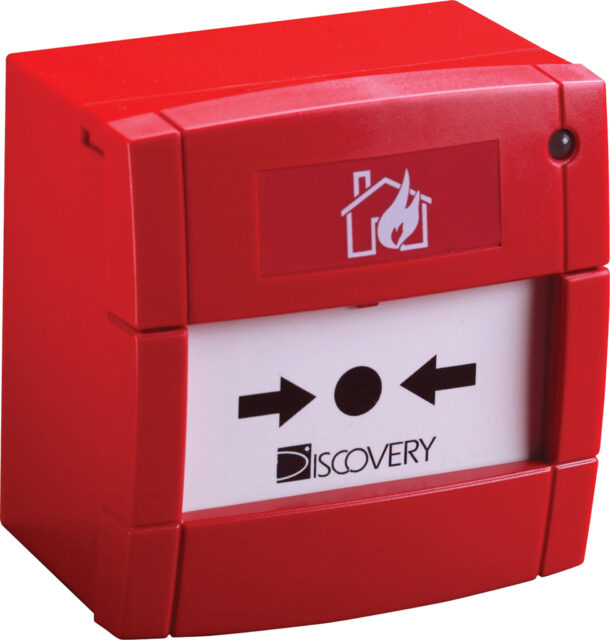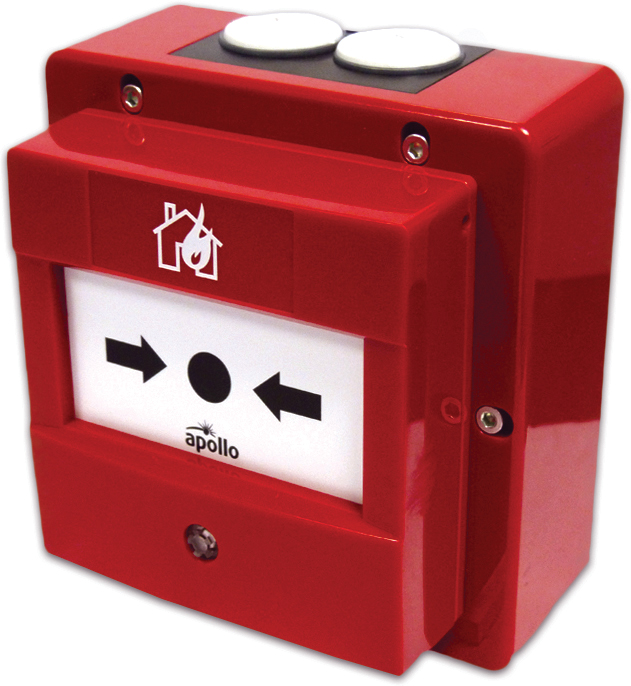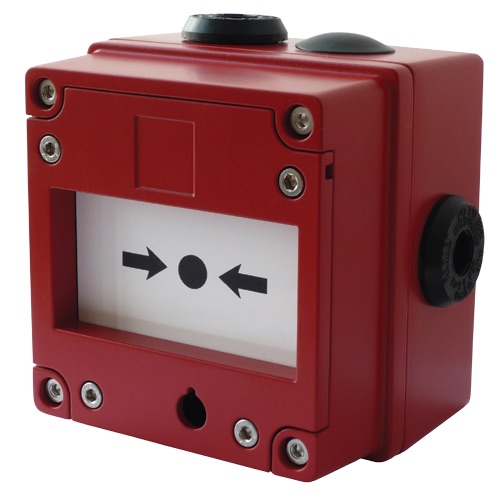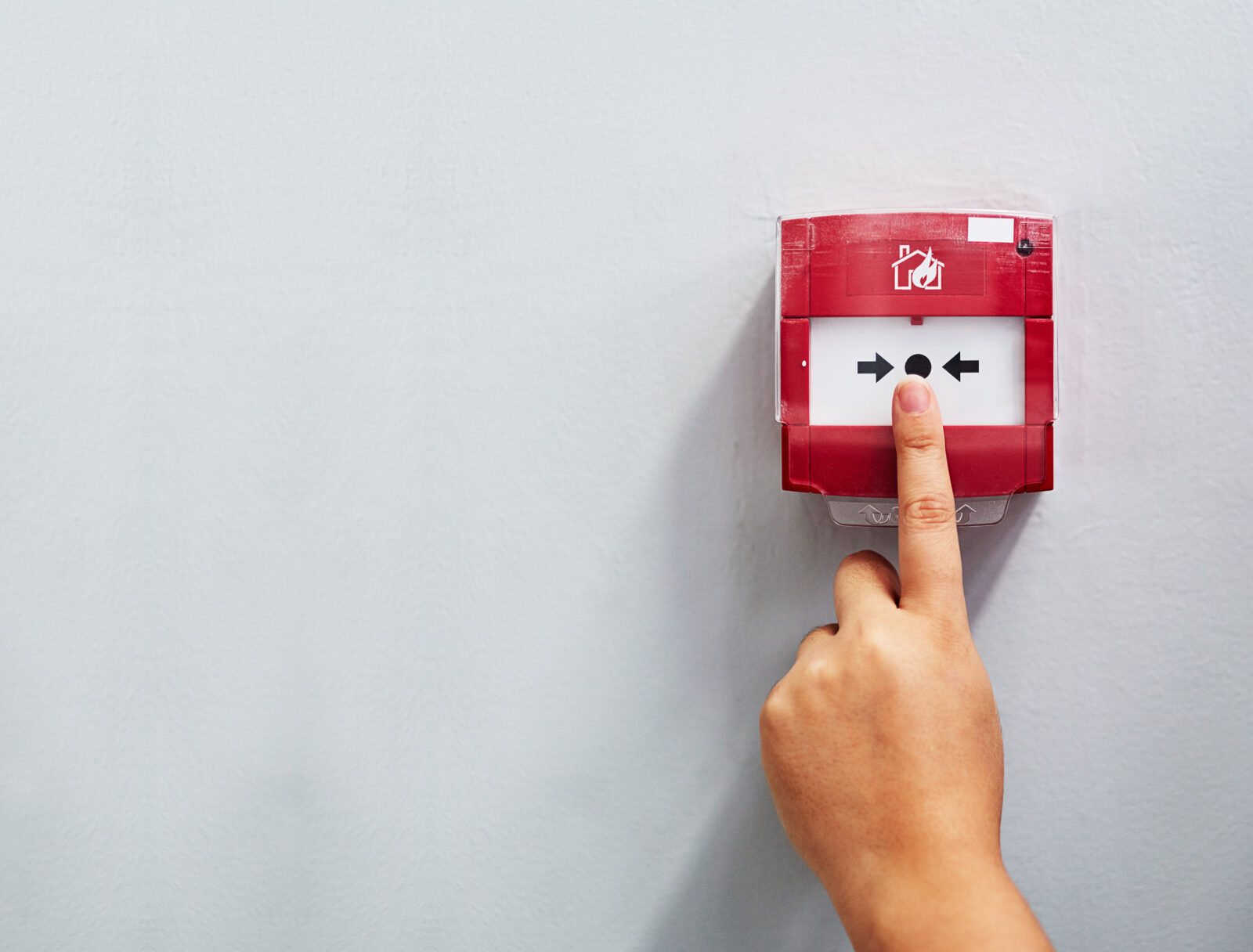As buildings become taller and more complex, so does the need for efficient and effective fire safety measures. One of the most crucial components of any fire safety system is manual call points (MCPs). These devices allow individuals to trigger a fire alarm in case of an emergency manually.
In this guide, we will discuss everything you need to know about MCP installation and maintenance.

Understanding fire alarm call points
What is a fire alarm call point and what does it do?
A fire alarm call point, also known as a manual call point (MCP), is a crucial device that enables individuals to manually activate a fire alarm during an emergency. This function is vital for ensuring the safety of everyone inside a building during a fire incident. A fire alarm call point is generally a small box featuring either a button or a lever to manually trigger the alarm.
There are two main types of MCPs: break glass and push button. The break glass type requires breaking the glass to activate the alarm, while the push button type involves simply pressing a button.
Installation and location of fire alarm call points
Where should fire call points be located?
The location of MCPs is critical for ensuring their effectiveness. It is essential to place them in easily accessible and visible locations, preferably near exits and fire escape routes. This allows individuals to quickly activate the alarm and evacuate the building during an emergency.
According to fire safety regulations, there should be at least one manual call point on each floor of a building. In larger buildings, multiple MCPs are required, with a maximum distance of 30 metres between each call point.
Manual call points are typically positioned along escape routes and near fire exits in public buildings and construction sites. They should be installed in high-risk areas, such as kitchens, and along all escape routes from a building or worksite.


Fire Alarm System Integration and Maintenance
How manual call points integrate with fire alarm systems
Manual call points are an integral part of any fire alarm system and work together with other components, such as smoke detectors, heat detectors, and sounders. In case of a fire incident, the activation of a manual call point will trigger the alarm and warn individuals to evacuate the building.
However, it is crucial to ensure that MCPs are integrated correctly with the fire alarm system during installation. Regular maintenance and testing of both the manual call points and the entire fire alarm system are also essential for optimal performance.
Manual call points send a signal to the fire alarm control panel, alerting it to a fire in the vicinity. As a crucial component of a fire alarm system, they enable users to activate the alarm during emergencies.
Maintenance and testing of fire alarm call points
Regular maintenance and testing of manual call points are vital for ensuring their functionality during a fire emergency. The frequency of testing and maintenance may vary depending on regulations and the type of building or worksite.
During regular inspections, call points should be visually inspected to ensure they are not damaged or obstructed. Any issues should be immediately reported and addressed.
Periodic testing involves activating each manual fire call point to confirm its proper functioning. This can be done manually or through a remote test key. Annual maintenance by a qualified technician is also necessary to ensure the system remains in optimal condition.
Manual call points should be tested weekly as part of fire alarm procedures. Regular maintenance and checks with a Manual Call Point Test Key are essential to ensure they remain operational.
Selecting the right manual call point for Your Fire Alarm
Factors to consider when selecting a manual call point
When choosing an MCP, it is crucial to consider factors such as the type of building, the environment, and regulations. Here are some key elements to keep in mind:
- Type of building: Different types of buildings may require different types of manual call points. For example, a construction site may require robust and weather-resistant call points, while a residential building may need aesthetically pleasing ones.
- Environment: The location and environmental conditions can also impact the selection of an MCP. For instance, outdoor areas or high-risk environments may require explosion-proof manual call points. Marine environments often require the use of waterproof or corrosion-resistant materials and solutions to withstand the harsh conditions prevalent in these settings.
- Regulations: It is essential to ensure that the selected manual call point complies with local fire safety regulations and standards.
Evaluate the building’s requirements and select the appropriate type of break glass fire alarm. For instance, in locations without electricity, like construction sites, a Manual Call Point Alarm & Signage Bundle Kit is ideal.
Marine Approved Manual Call Point
Manual call points are an integral part of any fire alarm system, and this is especially true for marine applications.
While vessels are at sea quick alarm notification of fire is essential. Manual call points should be easily identifiable and locatable.
All fire detection devices used at sea should carry marine approval. Marine approvals, such as Lloyds Register, DNV or MED approval certify that the products have been rigorously tested for marine environments and crucially will not interfere with ships navigation and compass systems.

Apollo Waterproof Manual Call Point – Buy now on LGM Products
Manual Call Points for use in Hazardous Areas
A hazardous area is identified by an area that has a potentially explosive mix of gas and/or dust particles. All electrical components used within hazardous areas must be certified for use within these environments.
Manual call points are no exception to these regulations.
For use within hazardous areas, manual call points can take two forms of electrical protection –
Intrinsically Safe – this is where the product has been designed to ensure that it will never exceed the electrical parameters to be an explosion ignition source
Flameproof – alternatively, the electronics can be encapsulated within a rugged enclosure that ensures any electrical fault that could cause an explosion ignition is limited to the product’s own enclosure.
Manual call points must conform to one of these design philosophies and be approved accordingly before they can be installed within a hazardous area.

Best practices for fire alarm protection and maintenance
Tips for protecting and maintaining your fire alarm system
To ensure the safety of everyone in your building, it is essential to follow best practices for fire alarm protection and maintenance. Here are some tips to keep in mind:
- Regular testing: Regularly test manual call points and the entire fire alarm system to ensure they are functioning correctly.
- Proper installation: Ensure that MCPs are installed correctly and in compliance with regulations.
- Timely repairs: Any issues or damages should be immediately reported and repaired by a qualified technician.
- Educate occupants: Educate building occupants on the location and proper use of manual call points during fire drills and safety training sessions.
Regular maintenance of fire alarm call points is crucial. Use a manual call point Test Key to ensure they are functioning correctly. Call point covers play a vital role in preserving the integrity of manual call point fire alarms, shielding them from weather damage and wear and tear.
Buy your manual call points from LGM Products today!
In conclusion, manual call points are essential components of a fire alarm system and play a crucial role in protecting individuals and buildings from the dangers of fire. Correct installation, integration, and maintenance of MCPs are necessary for their optimal functioning during emergencies. When selecting an MCP, consider factors such as the type of building, environment, and regulations to choose the most suitable one.
At LGM Products, we offer a range of high-quality manual call points that comply with safety standards and regulations. Our products are durable, weather-resistant and easy to install. Protect your building today by purchasing manual call points from LGM! So don’t wait any longer – visit our range now to place your order.
Remember, regular maintenance and testing are crucial for ensuring the optimal performance of manual call points and other fire alarm components. Join our mailing list to stay up to date with regulations and follow best practices to ensure the safety of everyone in your building or worksite.
Choose LGM Products for all your manual call point needs!

